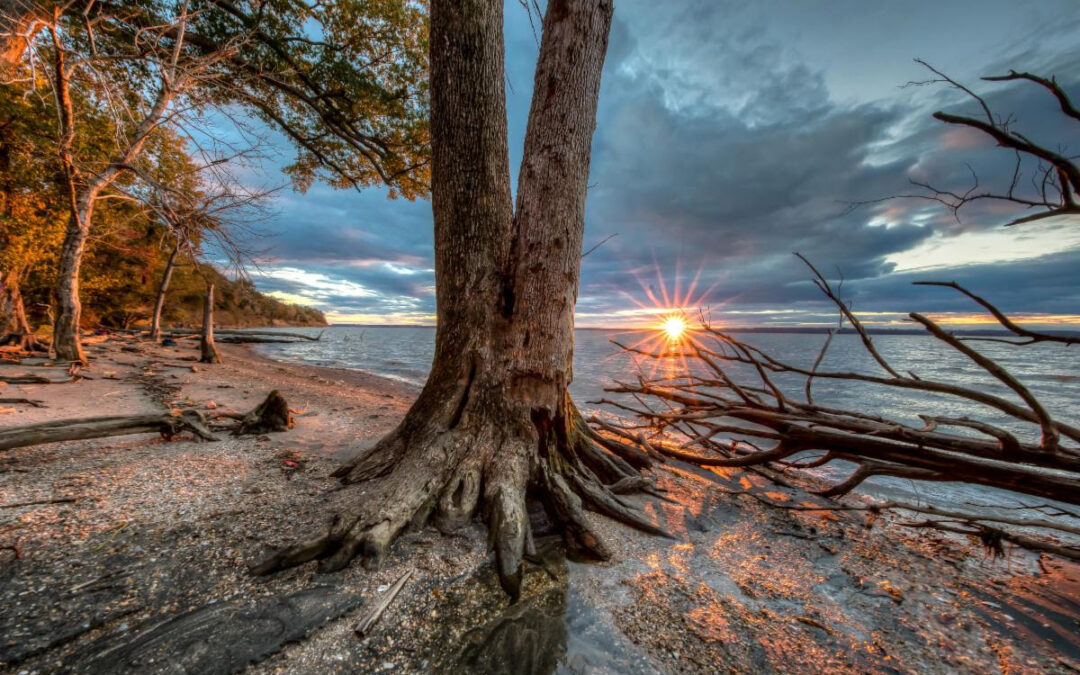At the north end of Douglas Point SRMA, you’ll find a small beach and Potomac River overlook designated as a “water stop” for the State of Maryland water trail component of the Potomac Heritage National Scenic Trail.
Written by BLM Eastern States Communications
When thinking about the Bureau of Land Management (BLM), most tend to look out west, where the agency manages vast swathes of the nation’s public lands. In the east, BLM executes a unique brand of managing public lands, responsible for 40,000 surface acres and 39 million subsurface federal mineral estate for the 31 states east of the Mississippi River.
The BLM’s mission is a dual mandate: managing public land for multiple uses while conserving natural, historical and cultural resources. Except in areas specifically set aside for conservation purposes, the BLM must multitask to manage the myriad land uses, some of which may appear to conflict with other uses or resources. That makes the BLM’s stewardship mission both complex and challenging.

Meadowood SRMA boasts a 300-foot Progressive bike ramp that attracts mountain biking enthusiasts from across the Mid-Atlantic.
With its responsibilities in managing the Meadowood and Douglas Point Special Recreation Management Areas in Virginia and Maryland, the BLM has an important stewardship role that aligns with the Chesapeake Conservation Partnership’s (CCP) mission of fostering collaborative action to conserve culturally and ecologically important landscapes to benefit people, economies and nature in the Chesapeake Bay watershed. Both BLM properties sit along the Potomac River, featuring segments of the Potomac Heritage National Scenic Trail and Washington-Rochambeau Revolutionary Route National Historic Trail. In addition to the rich history, Meadowood and Douglas Point are greenspace retreats for recreationists and anyone seeking solitude in nature so close to the Washington, D.C., metropolitan area.
“What we have in Meadowood and Douglas Point are some of the last remaining undeveloped tracts along the Potomac, and we’re just a stone’s throw away from the hustle and bustle,” said BLM Eastern States Deputy State Director for Natural Resources and CCP steering committee member Anthony Bobo. “Working with others is key to fulfilling the BLM’s multiple use mission, and our emerging collaboration with our CCP partners will help to enhance these public lands for all to enjoy.”

The colonial era Chiles Homesite is the most well-known historic attraction at Douglas Point. A public walking path, complete with interpretive panels, winds around the remaining chimney ruins of the original house.
To further its collaborative approach to managing public lands within the watershed, the BLM entered into a Memorandum of Understanding (MOU) with the Chesapeake Conservancy to establish a general cooperation framework for enhancing the public’s understanding, appreciation and enjoyment of the Potomac River.
“The BLM is committed to promoting conservation, recreation and access in the Chesapeake watershed,” noted Bobo. “Our partnership with Chesapeake Conservancy is a good example of how collaboration is a win-win for land conservation and, more importantly, for the shared public we serve.”
In September 2022, the BLM’s collaboration with the Chesapeake Conservancy bore more fruit for the watershed, and exciting projects are on the horizon. Separate from, but following in the spirit of the MOU, the BLM provided federal funds to the Chesapeake Conservancy to upstart youth engagement, improve customer service to underserved populations and assist in increasing awareness about public lands and the important work BLM does on the lower Potomac.
With this investment from the BLM, the Chesapeake Conservancy hosted a conservation and land management themed symposium for high school students; plans to design a geospatial analysis training and work experience program for student interns; hire bilingual rangers on BLM lands to provide customer service for visitors and assist with tracking recreation use in the area; and map access to understand how historically disadvantaged communities can benefit from using and enjoying the area.

Meadowood SRMA offers 13.4 miles of hiking trails, 7 miles of horseback riding trails and 6.6 miles of mountain biking trails, 2 fishing ponds, 800 acres of forest and meadows and more.
- Bob Wick/BLM
- Leslie Kehmeier/International Mountain Bicycling Association
- BLM
- BLM
Lightning Update is a regular communication of the Chesapeake Conservation Partnership. Any opinions expressed are those of the authors and do not necessarily reflect positions of the Partnership or member organizations.
To share a success story, news, or important event, send your information to:
Support for the Chesapeake Conservation Partnership is provided by:
National Park Service Chesapeake
EPA Chesapeake Bay Program
USDA Forest Service
Pennsylvania Department of Conservation & Natural Resources
Maryland Department of Natural Resources
Virginia Outdoors Foundation
US Fish & Wildlife Service
Chesapeake Conservancy
The Chesapeake Conservation Partnership is co-convened by:




